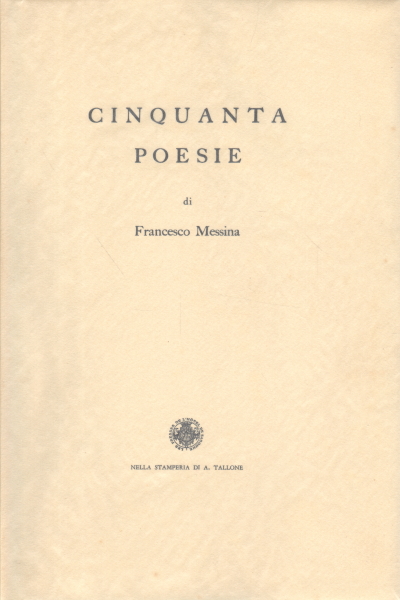
In the first episode of this journey through Italian typographic art, we encountered two great artists of the past: Francesco Griffo of Aldus Manutius’ Press and Giambattista Bodoni with his Press in Parma. Two of the most interesting printers of the 20th century are inspired by this great tradition.
The first, Alberto Tallone, son of painter Cesare, took over a printing press founded in the late 1700s in 1938, creating les Éditions Alberto Tallone in Paris, and later moving in 1960 to Alpignano, near Turin. Aesthetic perfection, the absolute quality of raw materials (handmade paper from the best Italian, European, and Japanese paper mills), and a collection of original typefaces spanning from the 18th to the 20th century define the research of this printer/publisher. This research is aimed at the principles of “pure typography,” resulting in a catalog of unique titles offering both classical texts and contemporary poets in a wide variety of languages, formats, and typefaces. Each editorial project, entirely handmade, is tailored to each work, highlighting its deep spirit, with the unmatched art of covering the nakedness of words while being careful not to distract or disturb the reader with its own presence. Our bookstore offers a small example in the Fifty Poems by sculptor Francesco Messina, composed by hand with William Caslon typefaces and printed in 270 copies in Alpignano in 1974.
The adventure of Hans Mardesteig is directly inspired by Bodoni’s lesson: in founding his Officina Bodoni in 1922 in Montagnola, in Italian Switzerland, he stated that it had «as its goal the use of a hand press with which to print perfect works of great artistic value in editions of a few copies to be distributed in Italy and abroad».
To achieve this goal, Mardesteig managed to obtain the original matrices of G.B. Bodoni stored in Parma: from the small Swiss press came authentic unique pieces of precious rarity. In 1927, Mardesteig moved to Verona, where he was tasked with printing D’Annunzio’s Opera omnia for Mondadori. This began the Italian period of Officina Bodoni, which would later lead to the founding of Stamperia Valdonega after the war. Starting in 1936, Mardesteig began a personal search for new typographic models, inspired by the great masters of the past, creating a series of new masterpieces of elegance and balance.
Our bookstore offers a fascinating booklet from the legendary period of Officina Bodoni in Montagnola: An Excerpt from A Sentimental Journey by Lawrence Sterne, published in 1926, in only 25 hand-printed copies.

The colophon, signed by Hans Mardesteig himself, helps us enter this world so far removed from the industrial logic of modern publishing: when the book was composed, it was impossible to reach England, and this is reflected in the words presenting the work to the reader: “A journey, it would seem, is at the mercy of political factions; not so sentiment, which is the motive of all good journeys. In a sentiment of admiring affection for the heroic island where I hoped to journey – when railway wheels should move again – this greetings was printed with Giambattista Bodoni’s twelve point type “CUNEO”, here used for the first time since his death”. A very close relationship between the publisher/printer and “his” book, offered to a very small circle of connoisseurs with whom to share something that is much more than a commercial product.










